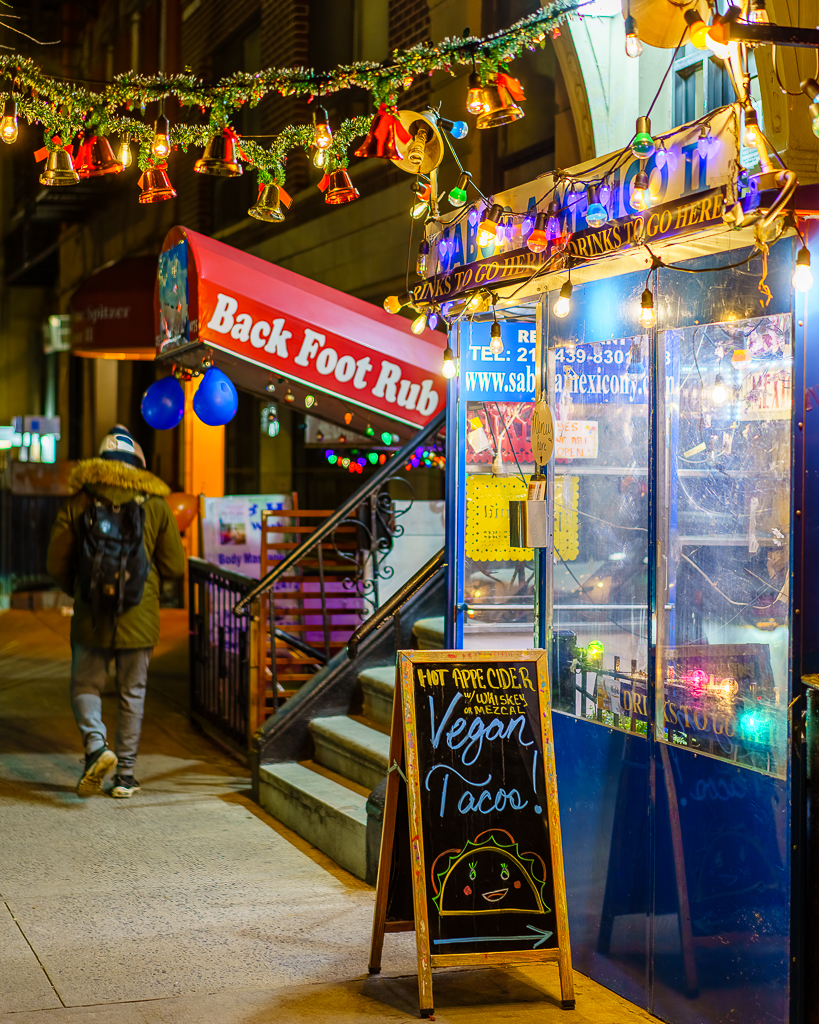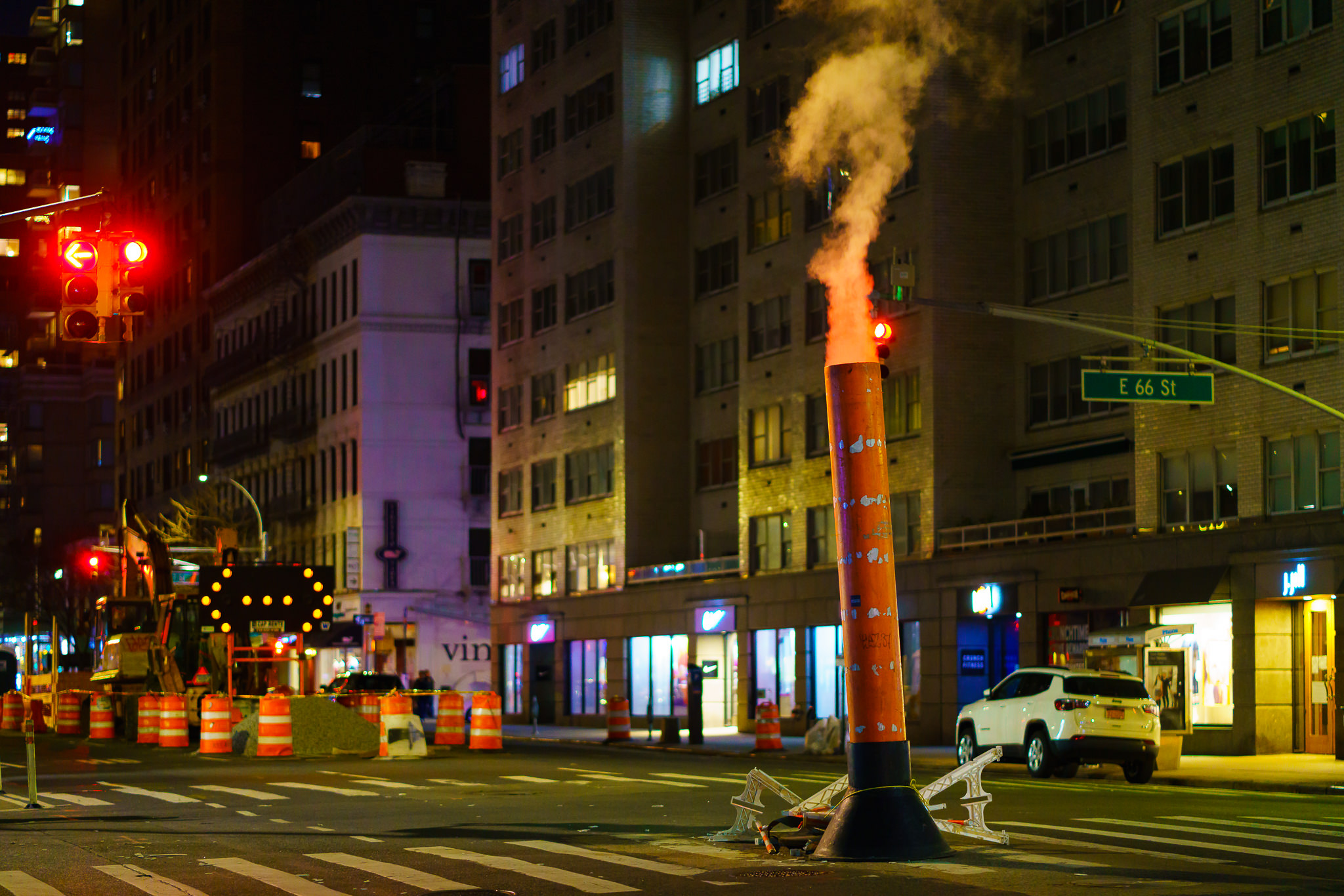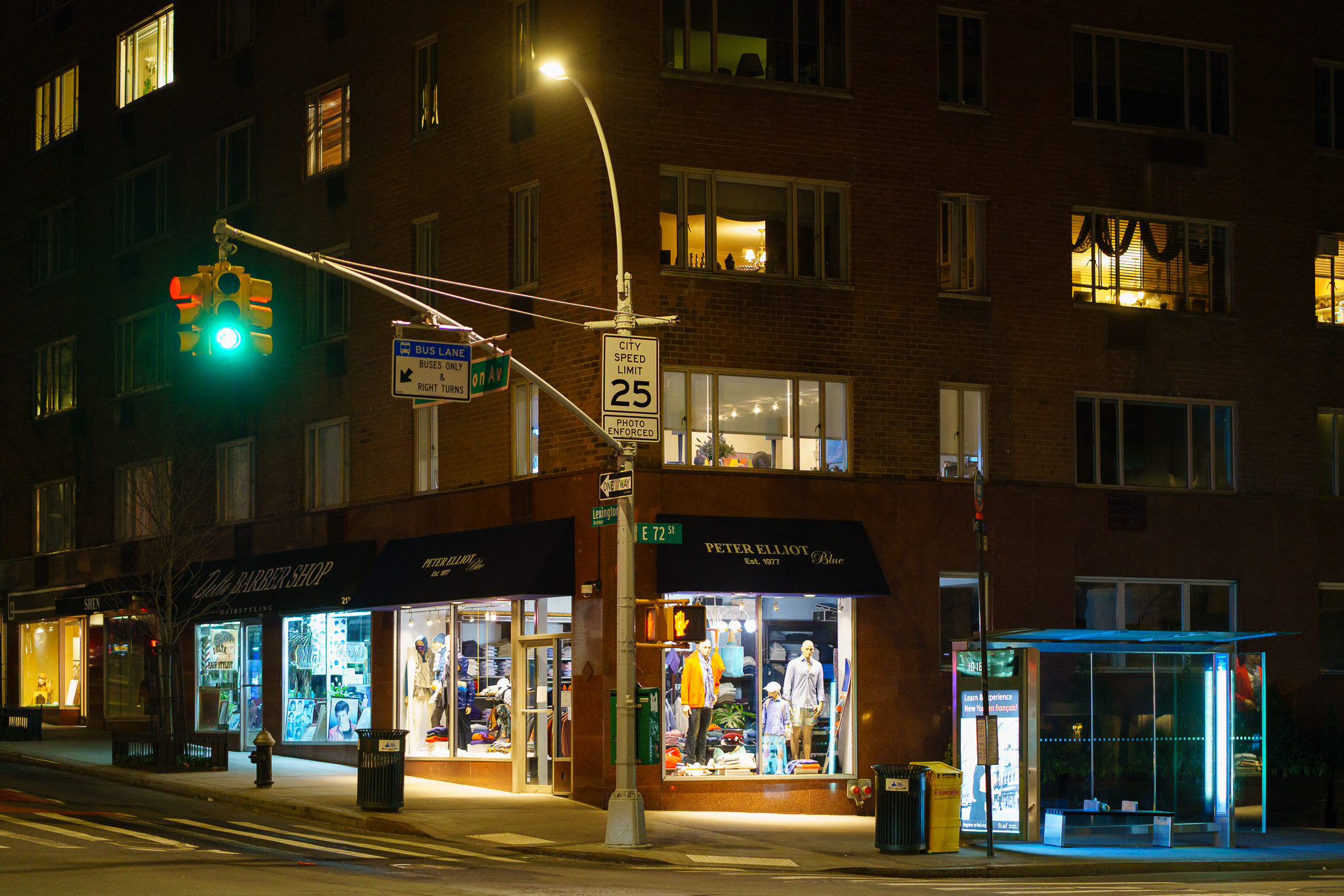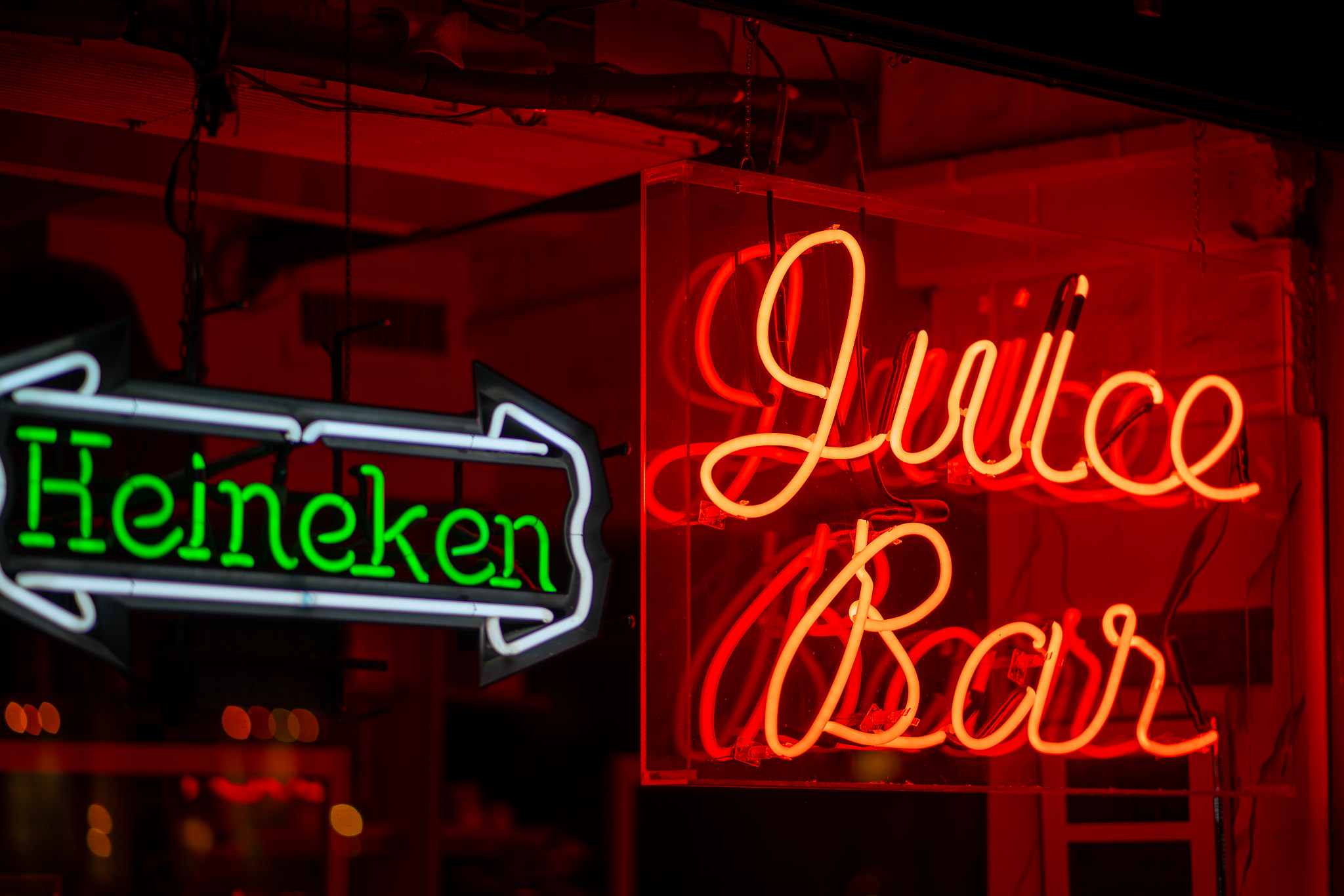About a week ago, the delivery man dropped off one of the most hotly anticipated camera bodies in recent memory: Fujifilm's new GFX 100S medium-format camera.
Is it everything that you might expect? Are there any glitches that you might want to be aware of?
Read on to hear my impressions after a week of shooting with the camera. I’ll also discuss how I discovered and resolved a perplexing autofocus mystery.
 |
| 1/140s @ f/5.6, ISO 200, VELVIA simulation |
General Impressions
The texture, buttons, and menus of the GFX 100S remind me of a Canon 5D series body. This is completely subjective, but to me, it feels more like a Canon than a Nikon or a Sony. That’s not a criticism, just an observation. They’re all great cameras.
When you attach a lens, the combination feels heavy, but it’s surprisingly comfortable to walk around with this camera and shoot handheld for extended periods.
The enclosed strap is comfortable and seems quite durable. It’s the best came-with-the-camera strap that I have ever seen.
The shutter is remarkably quiet, the softest actual shutter sound that I have ever heard (excluding silent shutter modes which you can’t hear at all).
 |
| 1/90 @ f/5.6, ISO 800, PROVIA simulation |
The autofocus is pleasantly responsive. It’s as fast or faster than most cameras that I have used, and it has been remarkably accurate (see the mystery below for an exception). I have yet to see the camera “hunt” for focus, which is quite impressive. This is not a wimpy autofocus system.
Manual focus works well. There are options to turn show focus peaking with a variety of colors, and also to magnify the image as you focus it. Neither of these settings are enabled by default, but it’s easy to find them in the menus.
High ISO noise is very well controlled. I haven’t pushed the camera to extremes, but I’ve taken a number of shots at ISO 1600, and they are considerably cleaner than files from my Sony bodies (a7R III and IV). This surprised me, but it’s a pleasant surprise.
The film emulations are fun and inspiring. They provide looks that are different than anything that I have seen. (This is my first experience with a Fujifilm body.) Lightroom and ACR emulate these settings as presets, so you compare different looks during post-processing.
 |
| Adobe Color Profile |
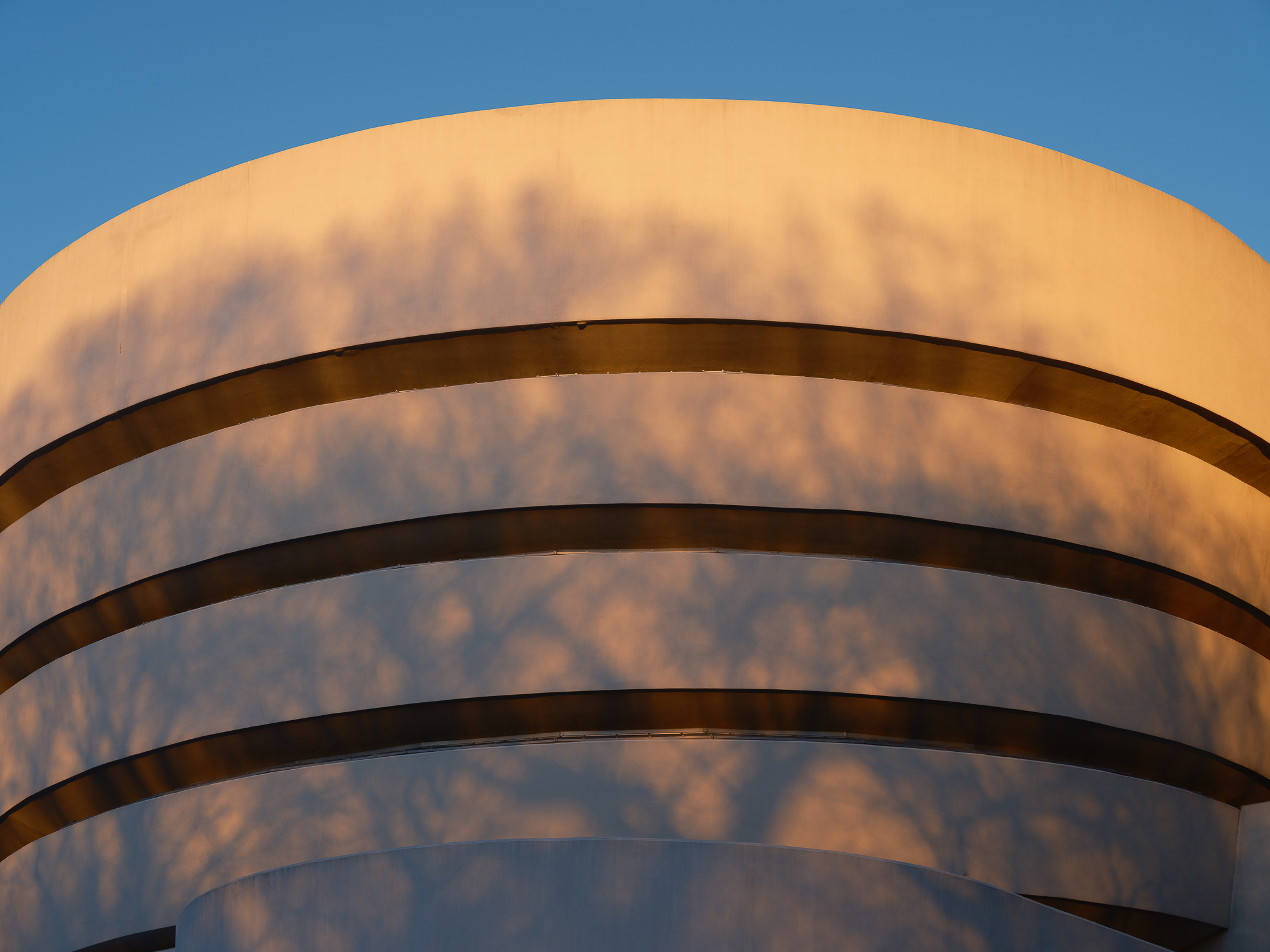 |
| Nostalgic Negative Simulation |
 |
| Acros + Red Filter Simulation |
To get the sharpest results while handholding the camera, I found that I need to shoot at 1/180th of a second or faster, even with the in-body image stabilization engaged while using a relatively wide-angle lens (GF 32-64). Images taken at slower shutter speeds, even down to 1/40s, were detailed and usable with rare exceptions, but images taken at 1/200s and faster look considerably sharper. It’s as though the camera can produce “sharper than sharp” images under optimal conditions.
The GFX 100S uses SD cards, not the newer, more expensive card types. This is fine, because the 100S doesn’t shoot 20 frames per second.
When you use multiple cards, the default configuration is called SEQUENTIAL, which writes to Card 2 when Card 1 fills up. You can change this to BACKUP if you want images to be written to both cards at once. There are separate settings for stills and video.
The camera is big enough for people notice it. It’s not a stealth camera that you can slide into a crowd. That said, it looks like a regular camera body, not some cutting-edge technological marvel. People will think that you borrowed your uncle’s DSLR.
 |
| 1/180s @ f/5.6, ISO 400, Nostalgic Negative Simulation |
The GFX 100S doesn’t ship with a printed manual. The manual is online, and you can download a PDF.
It also doesn’t come with a battery charger, which for the price seems ridiculous. To charge the battery, you put it in the camera and connect the camera to a power source (wall plug or computer). Adapters for all global regions are included.
The battery is not charged before shipping “for safety reasons.” You’ll need to charge it before you can start using your camera. A full charge will take about an hour, so be patient. A light on the camera is on while charging and turns off when you’re done.
GFX 100S raw files stored in Lossless Compressed format are about the same size as raw files from a Sony a7R IV. The Sony does not have a lossless compression option. Convert a raw file to TIFF format, and it will be about 600 megabytes in size.
 |
| 1/200s @ f/4, ISO 200, Adobe Vivid Profile |
 |
| Detailed crop of the above image |
Firmware updates are extremely easy. (I updated an old lens.) You download the file, copy it to a newly formatted SD card, put the card in the camera (with a fully charged battery, please!), and turn the camera on while holding the Back button. Follow a few simple prompts on the LCD, and be careful not to press any buttons, and the update happens fairly quickly. Sony engineers should look at how the GFX 100S updates firmware, because Sony’s method is the worst that I have seen.
I don’t miss the four-way pad that, for example, Sony bodies have on the back. The camera is easy to use without it. The controls are very well-placed and comfortable to reach.
Battery life is good but not exceptional. The GFX 100S battery drains faster than the Sony a7R IV, but not nearly as fast as earlier Sony bodies like the a7R II. I would recommend carrying at least one spare battery with you depending on your shooting needs, but more if you plan to shoot for long days without recharging.
 |
| 1/120s @ f/8, ISO 400, ASTIA simulation |
Evaluating Sharpness
I was eager to see how much detail the GFX 100S could capture, because details is the main reason why someone would buy a camera like this. I ran out on that first day and took shots of buildings with detailed brick façades.
When I viewed the files on the computer, there were some surprises.
- JPEG files out of camera are not as sharp as raw files. I was looking at JPEGs because ACR and Lightroom were not yet updated. You can tweak the sharpness control in the camera, but I would question why you would buy a camera like this in the first place if you primarily shoot JPEGs.
- I have already mentioned that for handheld shooting, a fast shutter speed will give you the sharpest results when you’re shooting with a non-stabilized lens. In-body image stabilization helps, but it won’t work miracles.
- I did my initial evaluation on a GF 32-64mm lens. If you have used this lens or read reviews, you probably know that it’s soft in the corners. The worst performance is at 32mm. It’s better from 35-64, but it’s not perfect, even when stopping down to f/11.
- Please remember to update the firmware in your older GF lenses or they won’t work properly with phase-detect autofocus.
 |
| 1/170s @ f/8, ISO 250, VELVIA simulation |
The Mystery Of The Misplaced Autofocus
As a result of my trial and error, I started shooting with faster shutter speeds, and I did my best to maximize the performance of the GF 32-64 by avoiding its weak spots.
Within a few days, Adobe updated ACR, and I was able to look at the raw files in Photoshop. They looked very sharp in most cases, but some files were still disappointing.
When I looked closely, I noticed that the camera had focused on objects that were close to the camera even when I had positioned the focus point on distant objects.
A bit of research in the manual solved the mystery.
The GFX 100S has familiar autofocus modes (single-point, zone, wide) and they work as you would expect them to. But Fujifilm provides another mode (All) that I had never encountered before.
When AF MODE is set to All, it appears to let the camera choose whether to use single-point, zone, or wide depending on the circumstances. Think of this as the mode that you would want if you handed the camera to your aunt and asked her to take a picture of you in front of Niagara Falls. You want the focus to be on your face, and the camera will make that happen even if the focus point is out over the falls somewhere.
I was placing the focus point where I wanted it, but because All is the default AF MODE, the camera chose to override my instructions. Mystery solved. Lesson learned. I switched to Single Point mode, and everything is working fine now.
 |
| 1/80s @ f/5.6, ISO 500, VELVIA simulation |
Conclusions
The GFX 100S is a groundbreaking camera. No other camera on the market today has its combination of features, ergonomics, and price point. There’s a lot to appreciate here, and so far I have not uncovered any negatives.
That said, it’s not an inexpensive piece of kit once you add in a GF lens or two. I felt that potential buyers might benefit from an account this camera being used in real-world conditions.
The bottom line is that I am very impressed. The camera is not overly heavy or bulky. The buttons are well placed. The autofocus is more responsive than you might expect. The menus are easy to navigate. The film simulations are lovely. The body seems to be durable and well-made. Battery life is acceptable as is the viewfinder resolution (although either of these could have been a bit better). And when you have the right settings enabled and you handle the camera properly, the output is wonderfully detailed.





















